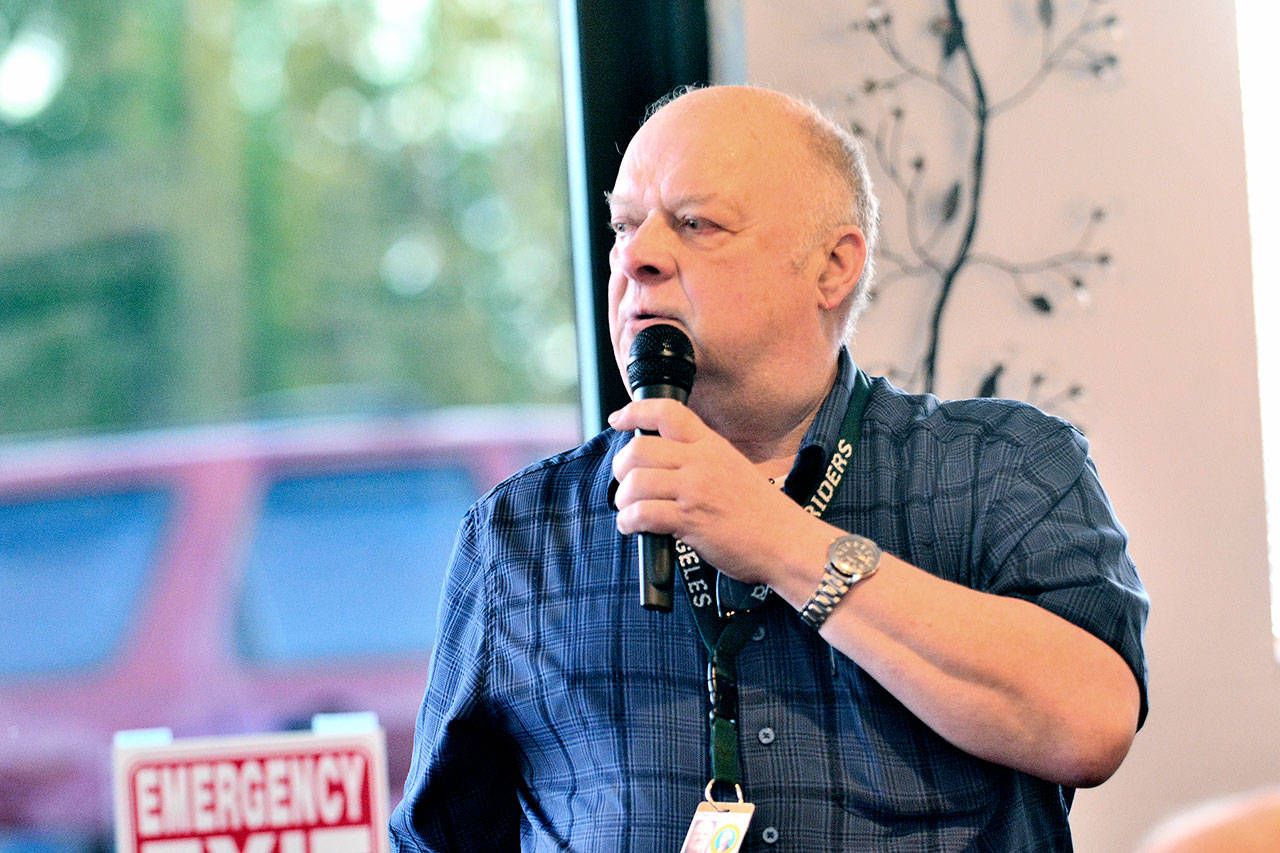PORT ANGELES — Former state Rep. Jim Buck shared his experience in Puerto Rico with the Port Angeles Business Association Tuesday, comparing the response to the hurricane that struck the small U.S. territory to what would happen if a massive earthquake hit Clallam and Jefferson counties.
Among his takeaways from his recent trip was that those who lived closer to the main roads and highways received help first, while those who lived in the more mountainous areas had to wait.
Puerto Rico is just about the same size as Jefferson and Clallam counties, but has a highway system that circles the mountainous area in the center of the island.
Many of the locals he talked with were angry with the federal government’s response to Hurricane Maria, “until they realized it was their job to get the stuff distributed across the island and that the materials were there, but they weren’t being distributed,” he said. “Then they started to figure out they weren’t very happy with their local government.”
Buck said communities that prepared to receive and distribute supplies were the first to get federal aid.
“If you had the road cleared and you had a place where you could get a tractor trailer or something that had materials in, it got to you,” he said.
“If you were … 40 miles further up in the mountains and the roads are all blocked, that stuff is not going to sit on the pad in San Juan waiting for you to get it open; it’s going someplace where it can do some good.”
He said this is why it will be important to get U.S. Highway 101, state Highway 112 and side roads open as soon as possible once tragedy strikes.
Based on the geological record and written accounts from Japan, the last major Cascadia quake occurred Jan. 26, 1700.
Emergency planners say that in the advent of a Cascadia Subduction earthquake, Clallam County and Jefferson County will be isolated for weeks because bridges will collapse and roads will fail, creating dozens of micro-islands on the North Olympic Peninsula.
Based on the geological record and written accounts from Japan, the last major Cascadia quake occurred Jan. 26, 1700.
Geologists say it is not a matter of if, but when the next big one strikes the 600-mile-long subduction zone off the Northwest Coast.
When it happens again, people will be on their own at first, Buck said. Local first responders and government employees will not be able to mobilize immediately after an earthquake, he added.
“If a volunteer — or anybody for that matter — wants to help but can’t be sure their family is OK, they’re not coming,” he said. “That’s perfectly understandable. So it’s important for us to make sure that our first responders and government employees have all made arrangements to safeguard their families.”
He told those at the PABA meeting that businesses in downtown San Juan remain closed and stores like Wal-Mart and Walgreens have set up temporary stores in parking lots.
“If people can’t get the materials they have to have to fix their house and replace their stuff here, they are going to go someplace else to get it and if they can’t get it at all, they are leaving,” he said.
Buck said his eyes were opened to an issue he and others hadn’t even considered during his time in Puerto Rico. That’s what to do with the debris and wreckage.
He said along roads in Puerto Rico there are piles of debris three stories tall and now people are trying to figure out what to do with them.
Buck is preparing three lectures on disaster preparedness in the coming days at the Sunland Golf & County Club ballroom, 109 Hilltop Drive, Sequim.
They are:
• 6:30 p.m. Thursday, March 29 — Cascadia Subduction Zone Earthquake: The Threat to Clallam County.
• 6:30 p.m. April 5 — Ends of the Earth: Comparison of Cascadia Quake in Clallam County and Hurricane Maria, Puerto Rico.
• 6:30 p.m. April 11 — 30 Days on Your Own: Camping in Your House.
________
Reporter Jesse Major can be reached at 360-452-2345, ext. 56250, or at jmajor@peninsuladailynews.com.

